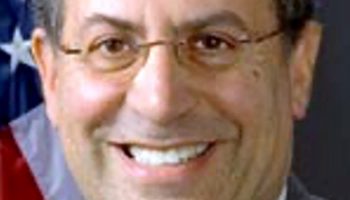
Mariia Novoselia
Staff writer
By 2050, the weight of plastic in the sea is estimated to surpass the weight of sea creatures, said Katie Dougherty, executive director of Washed Ashore – Art to Save the Sea.
“This is such a big problem that seems overwhelming, but we do believe that by coming together, we can make an impact and that a lot of little things can add up to make a big difference,” she said.
Dougherty’s lecture for the Chautauqua Climate Change Initiative, about the mission of Washed Ashore – Art to Save the Sea and the organization’s way of combating ocean plastic pollution is set for 9:15 a.m. today in Smith Wilkes Hall.
Washed Ashore – Art to Save the Sea conducts beach cleanups and collects plastic from the shores of Southern Oregon, and turns that garbage into larger-than-life sculptures. Fourteen of those sculptures — like Maggie and Charlotte, Adelie penguins located by the Smith Memorial Library; or Angus the Longhorn Cowfish in the Colonnade lobby — were installed at Chautauqua Institution prior to the season and will remain on the grounds until Oct. 31.
“People don’t like to stand and look at dirty water channels, but if you can awaken their hearts by turning something that is so ugly into something that is wonderful to look at, it really does start conversations,” Dougherty said. “That’s really where the change starts.”
Dougherty’s organization has cleaned over 300 miles of beaches, processing around 60,000 pounds of plastic, according to its website. Dougherty said the most common item volunteers find is plastic bottles.
With more than 1 million plastic bottles sold every minute across the globe, only around 9% are recycled, she said. What’s more, she said that number is expected to double by 2030.
“We really encourage to reduce, recycle, reuse and refuse,” she said. “We refuse single-use plastic bottles.”
The organization uses 95% of the debris volunteers pick up from beaches for the sculptures; the remaining 5%, Dougherty said, go back to the landfill because some items, like helium balloons, plastic gloves or cloth masks cannot be reused for the art.
Plastic pollution, she said, has significantly increased because of COVID-19, as a 2021 report showed the pandemic has created 8 million metric tons of waste.
Thousands of volunteers, Dougherty said, make Washed Ashore’s mission to “build and exhibit aesthetically powerful art to educate a global audience about plastic pollution in the ocean and waterways; and to spark positive changes in consumer habits” possible.
Besides collecting plastic debris from Oregon beaches, volunteers clean the debris with a vinegar solution and sort them by color. Some even help design sculptures.
Dougherty’s favorite sculpture, 17-feet wide Rosa the Bald Eagle, was made during the pandemic with the help of volunteers from all over the country. The initiative, called “Come Soar with Us,” invited people to create panels and kebabs of plastic trash that became Rosa’s feathers.
The organization, she said, has a gallery that invites “guests of all ages and all levels” to work on the sculptures.
“We love to have people with us,” Dougherty said. “(They) travel from all over the United States to come (to Oregon) and do a workshop with us.”
Dougherty said she joined Washed Ashore – Art to Save the Sea in 2019, first as the organization’s financial director. She became the executive director in February 2021.
A daughter of a commercial fisherman, she said she inherited her passion for oceans and environmental advocacy from her father, who would show her rip tides and how garbage floated in them. Scuba-diving since she was 18 years old, Dougherty said she has spent a lot of time either in water or next to it.
Dougherty said while general awareness of the scale and impact of plastic pollution has improved over the years, especially among younger people, the problem itself got worse, and she hopes her lecture prompts individual action.
“Each one of us has a place in the natural world; the creatures that live in it don’t expect to see plastic, and we, as humans, should be so aware of our plastic use, consumption and how it’s disposed of,” she said. “It’s our responsibility to make a difference, and now’s the time to inspire people to do something about it. We hope that our sculptures do that for people.”




